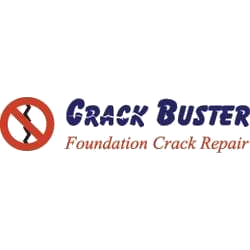EPOXY CRACK INJECTION
All of us love to keep our basement clean, safe and dry to add to its functional value. We find basements very useful in storing unwanted extra things lying around and also use it as an extended living space. If, however, there is a crack in the concrete that lets water into the basement, then the basement starts developing molds and attracting insects and rodents making it absolutely impossible to enter the space.
If there is a horizontal crack in the basement wall, it means there is a structural problem with the foundation. Epoxy crack injections are one of the effective methods by which you can stop water leakage and repair the wall. Some of the advantages of repairing foundation cracks with epoxy crack injections include:
- Epoxy Injections structurally repair the concrete
- Epoxies are much stronger compared to concrete
- Effectively stops water from entering the building
It is not easy to find out if there is a structural problem just by looking at the crack, so it is recommended to use the help of an expert. The crack may be an indication of a structural problem if it is wider than ½.” If the crack is horizontal, then you can be sure of a structural problem. If the crack starts from the inside corner and runs severely diagonal, it is a structural problem. On the other hand, if you find a crack under ½” in size starting from the window corner or the area where you find the foundation stepping down, it is definitely not a structural issue. If you are not quite sure, engage an engineer to determine the extent and nature of problem. They will use a crack stress gauge to find out and offer remedial suggestions.
Injecting epoxies from the inside of the building repairs cracks on the basement wall. Epoxies are in a liquid form and made of two components that are mixed even as it is injected into the crack. When the components mix, they cure and form a strong and durable material that reinforces the wall. As compared to concrete, epoxies are highly tensile and strong and have high compression. After injecting the crack with our high quality epoxy, you can be sure you will not face the problem of leakage.
 The process of injecting epoxy into the cracks is quite simple. A special paste is to attach plastic injection ports are every six to twelve inches. The special surface paste is then applied to the other parts of the crack after attaching the ports. This ensures that during the hardening process, epoxy is retained in the crack.
The process of injecting epoxy into the cracks is quite simple. A special paste is to attach plastic injection ports are every six to twelve inches. The special surface paste is then applied to the other parts of the crack after attaching the ports. This ensures that during the hardening process, epoxy is retained in the crack.
The third step is the actual injection of epoxy into the crack. Starting from the lowest port, epoxy is injected throughout the crack. The epoxy cartridge is inserted into the port after attaching a mixer to it. Upon injecting, the epoxy flows right up to the outer surface of the crack. All ports are injected and the epoxy is left to cure. It takes an average of seven days for epoxies to cure and completely harden.


There are no comments